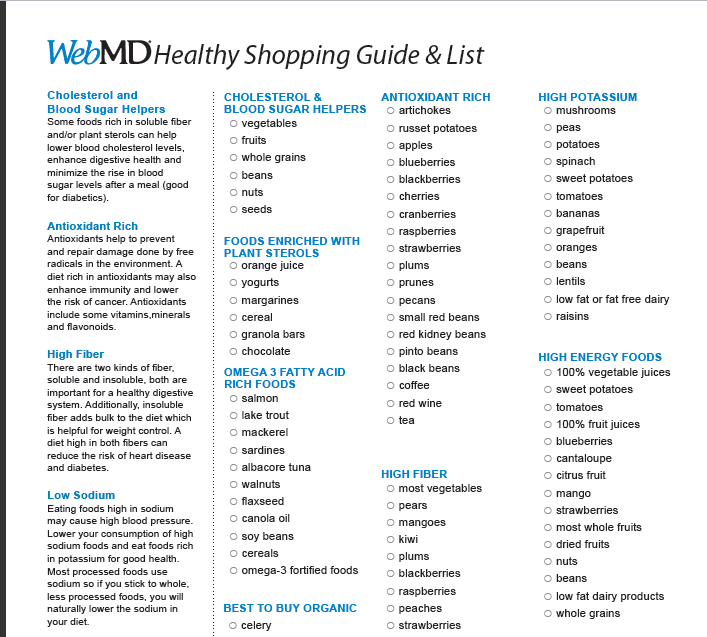“If you can’t pronounce it, don’t eat it.”
–Common sense
Why is eating healthy hard?
Because our culture doesn’t have good eating habits. And we think we’re too busy.
Cosmopolitan did a study: 50% of people polled reported being too busy to go on a diet. Forty-seven percent of respondents said that during lunch they were too busy to do anything but grab a sandwich at their desk. This is troubling when you consider the lack of healthy meal options.
Open your eyes and you’ll see that unhealthy food runs rampant throughout our daily lives. Coca-Cola, McDonalds, Applebees – even your local grocery store – profits by advertising and selling foods that are quick and easy, but ultimately are terrible for us.
It’s no surprise: processed, low-quality foods are cheaper to produce. Plus, they lend themselves to on-the-go consumption. What’s worse, our natural human inclination to munch on high-calorie, high-fat foods is addictive and habit forming.
But don’t despair! Today, we’re going to show you how to break away from all the junk and eat clean from sunrise to sunset.
Whether you truly don’t have 10 minutes to spare or can’t make it to the grocery store, here’s every option to eat healthy that you’ll ever need – with plenty of actionable tips.
Eat Healthy First
“Don’t eat anything your great-great grandmother wouldn’t recognize as food. There are a great many food-like items in the supermarket your ancestors wouldn’t recognize as food … stay away from these.”
–Michael Pollan, author of “The Omnivore’s Dilemma,” “Food Rules” and “In Defense of Food”
Unless you’re accustomed to the benefits of intermittent fasting, skipping breakfast is the last thing you want to do. Mornings are busy, with most people allotting less than ten minutes to eating a meal. To keep your energy up throughout the day, and avoid the links between breakfast-skipping and obesity, make time to start your day right.
Tip: Start with morning smoothies at home. Add:
- Chia seeds
- Greens
- Fresh fruits
- Protein powders
- Supplements
- Peanut or almond butter (great with blueberries)
- Oatmeal
- Almond milk
- Frozen fruit
- Raw eggs
Oatmeal (and not the flavored, sugar-loaded packets) is super-fast to make and take in a mug. Just boil water, add oatmeal, wait three minutes and garnish with dried fruits, nuts, cottage cheese or yogurt. Voila!
Did you know you can microwave eggs in a mug (and whatever else you want to mix in) and take it to-go?
Even grabbing a jar of nut butter and a spoon on your way out the door is better than nothing.
Hydrate
Sometimes, your brain can’t tell the difference between being hungry and thirsty. If you’re not drinking enough water, you could be unconsciously eating your way towards hydration.
The hypothalamus, a deep structure in the brain, is responsible for regulating not only appetite, but your “thirst levels,” body temperature and sleep processes. Because animals and humans have long derived much of our water from plant materials, the hypothalamus easily confuses signals between thirst and hunger.
Dehydration is tiring, so drinking enough water keeps your daily energy levels consistent. Plenty of this primary fluid will also lubricate your joints and muscles for easier and more comfortable living.
Drink water by the 8×8 rule: 8 cups of 8 ounces a day. That’s two liters or half a gallon.
Tip: Bring a liter water bottle with you everywhere … either a Nalgene bottle or a store-bought large size. Keep it close and sip regularly throughout the day. After you’ve filled and drank the bottle twice, you’re good to go. Easy!
Pre-Prepare Meals to Save Time
Would you spend 2 hours of your weekend time to be able to eat right and look great all week long?
Preparing your weekly meals in bulk on the weekends is a proven way to save time during the week and ensure you keep to your proper diet. Just make sure you’re cooking simple, healthy meals full of vegetables, proteins, healthy fats, fiber and complex carbs.

Plus, bringing your meals to work is cool again. It means you’re healthy – or at least on your way.
Before you get cooking, go out and buy several plastic containers and decent-sized Ziploc freezer bags. You’ll be dividing the meals you cook into portion sizes that are ready to take with you or eat at home. By preparing your meals in advance, you won’t have to think about what you’re going to eat as you’re rushing out the door to work.
You may decide to dice, chop and store fresh ingredients for takeaway salads or fresh-cooked meals. Or you could make a week’s worth of balanced, pre-cooked meals to bring with you. Whatever you choose, two hours will be plenty of time to prep for a given week.
Try out different recipes and food prep styles to find what you like.
If you live in a hot climate and your work doesn’t have a refrigerator, you may need a cooler and an ice pack to keep your food cold. But if you pull your meal from the fridge in the morning, wrap a rubber band around it to keep it sealed and eat it at lunchtime, the meal will remain cool and won’t require additional refrigeration. If you end up microwaving your meal, spoilage concerns are eliminated.
If you’re not hungry three hours after a meal, you may have made your portions too big.
Tip: Prep and store freezer meals. Pinterest is full of handy, delicious ideas that you can eat anytime, anywhere. They’re even great for microwaving at work. Freezer meals are also great to leave in a slow cooker all day while you’re at work. You’ll come home to the delicious smells of a home cooked meal – with plenty of leftovers.
Make a Shopping List
If you’re trying to eat healthy and save time in your week, definitely make a grocery list before you hit the store. The benefits of doing this are numerous. By writing out what you need, you’ll be more organized and spend less time wandering the aisles aimlessly. When you’re more focused, you’re less likely to stumble across the unhealthy options that overpopulate the shelves.
- Buy whole foods from side aisles instead of packaged, processed, preservative-filled foods that run down the center aisles.
- Adopt a get-in, get-out mentality at the store. Humans used to hunt for our food in the jungle. Now, it’s time we start hunting for our food in the grocery stores with a methodical, planned approach to meeting our nutritional needs.
- Design your shopping list around your weekly meals and healthy snacks to keep your cart looking trim and cut away excess purchases. When moving an item to the cart, ask yourself: Why am I buying this? Will it help me be healthy?
- Don’t go to the grocery store on an empty stomach. Ever gone to the store thirsty? You buy a lot of drinks. Go to the store hungry? Extra food items.
The rule is: if it makes it home, it’s going to get eaten.
Tip: If you can’t go without those potato chips or chocolate, store these guilty pleasures away from the rest of your food. By doing so, you de-habitualized reaching for the unhealthy options in the fridge and in the pantry. Store your candy in the garage, or better yet, upstairs (but not in the bedroom). Studies show that inserting a flight of stairs between yourself and cravings can drastically reduce the cravings to snack. This is because it takes energy to walk up stairs and the body is naturally inclined towards saving energy.
Get Healthy Delivery
Time is our most precious commodity, followed closely by our health. If you’re truly too busy to grab your list and head to the store, try out the organic food delivery service Grubmarket.
Think of them as a Whole Foods that delivers. Organic, non-GMO fruit and vegetables can be bought individually or in pre-selected meal boxes. You can snap up pantry items, vegan and gluten free snacks, jerky – all healthy the choices for your day.
Healthy ready-to-cook meals can save you the hassle and headache of trying to grab something healthy from the store (or a restaurant) after a long day at the office. If you know you’re days are running long, schedule deliveries of healthy options like a steak salad with chicory and curried chickpeas, salmon cakes with beet salad or cheesy pork enchiladas with avocado. All you need is salt, pepper and olive oil to whip up these 30-minute or less meals.
Here are four ready-to-make meals services with healthy choices that deliver nationwide:
Prices start around $50 per week for three meals for two persons. Most services offer a trial discount as well.
Snack Well
Buy and keep healthy snacks on hand, always. The last thing you want is to be forced into buying fatty, sugary snacks that derail your diet goals. Keeping your appetite satiated in between proper mealtimes reduces binge eating, helps us create healthy eating patterns, saves time and money and improves our overall feelings of dietary success.
Tip: Keep a bag of raw almonds, peanuts, healthy trail mix or sugar-free rice wafers in your desk drawer. Also stock a supply of healthy snacks in your car or bag for the commute. Stock the fridge with store-bought (or homemade) hummus, cut veggies and organic nut butters. A piece of fruit is a ready addition to your purse, briefcase or gym bag.
Choose Healthy Restaurant Options
Eating out is inevitable, but it doesn’t have to be an greasy, sugar-loaded experience. Obviously, you should stay away from fast food chains. Most sit-down establishments will have healthy options on the menu. If possible, prioritize places that are known for tasty and healthy dishes.
Tip: As a rule, stick to grilled instead of fried items. Always opt for the salad or the fruit over the fries. And beware the sides and sauces, as most salad dressings and prepared sides are loaded with hydrogenated oils (trans fat) and sugars. Opt for oil and vinegar on your greens and leave the restaurant a health conscious champion.
Stop Multitasking
Yes, you’re a busy person. But eating while performing other tasks facilitates overconsumption. Plus, it’s bad for digestion and nutritional uptake.
Absentmindedly eating is a surefire way to pack on extra calories. The digestive system needs about 20 minutes to signal to the brain that it’s full. If you’re eating too quickly, you’re likely to overeat. This can also lead to that painful, full, bloated feeling.
If you’re going to eat, eat. If you’re going to work, work. A snack or lunch break is meant to be just that – a break.
The five minutes it takes to munch an apple or a handful of cashews won’t destroy your productivity. But it will help you savor and appreciate your food. And help you unwind from the stresses of a sustained workload.
Tip: Put your utensil down between bites. Chew your food slowly and considerately. The practice of conscious eating helps many people control their portions and eat less by knowing when they’re really full. Plus, it will bring you into the present moment of eating and help you just relax into mealtime.
Don’t be Afraid of Failure
You can’t eat healthy 100% of the time; it’s not practical. Neither will you be able to curb every craving and regulate every want for something less than healthy. That’s just fine.
No one expects perfect discipline to your diet – and neither should you.
In fact, a treat here and there is recommended. Rewarding yourself for your hard work is incredibly important. To deny yourself every pleasure while living a hectic life, working hard and balancing responsibilities would be cruel.
Habits are patterns of action, they’re not absolutes. As adults, each of us must find and balance health and happiness. If you’re making good progress and eating healthy on a regular basis, you needn’t fear the occasional cupcake. It’s the pattern of cupcakes that’s concerning.
Tip: Be kind to yourself. Eating healthy requires more time and energy – especially if you’re new to it – than eating junk food. Set yourself up for success and focus on the habits you’re creating for yourself. Don’t beat yourself up over a few missteps or indulgences on the path to a better diet.
Attach Clean Eating to a “Why”
Tony Robbins, the famously successful motivational speaker, always instructs his listeners to consider their “why” – as in, why are you doing what you’re doing? What driving reason is there for it?
The “why” behind every action is the key to your prolonged success. Because tests and difficulties will come up in every shape and form.
Only your personal reason for sticking to a healthy diet will guide you through the hard times and help you make the right choices for yourself. Your motivation is your bedrock.
Some people opt for the salad instead of the burger so they can be better parents. It’s hard to take your children to the park and run around with them after a heavy, greasy meal. Their why is their children’s development.
Many eat a clean diet because they know it helps them exercise better at the gym. When you invest your time, money and sweat into a gym membership, you kinda’ want to make the most of it. Having good, clean energy for a workout is totally different than what you get after eating fatty foods.
For some, it’s as simple as knowing that proper nutrition and eating whole foods increases their energy, vitality and long-term health. A proper diet is shown to decrease the risks of cancer, inflammatory and heart disease, obesity, diabetes as well as most other contemporary maladies that plague our society.
Many of us – your humble narrator included – just like to look and feel our best.
Tip: Take some time to yourself and think about why you want to eat healthily. What is your ultimate motivation? Be honest because only with total frankness can you be open to actually changing yourself for the better.
Checkout
Clean eating is a must for a healthy life. And no doubt, it takes some rethinking and restructuring to incorporate healthy eating habits into a busy life. But this post has given you all the tools and tips you need to start tomorrow with better nutrition. With a bit of planning, cooking, consideration and better shopping you’ll be feeling better and better fed in no time at all!





